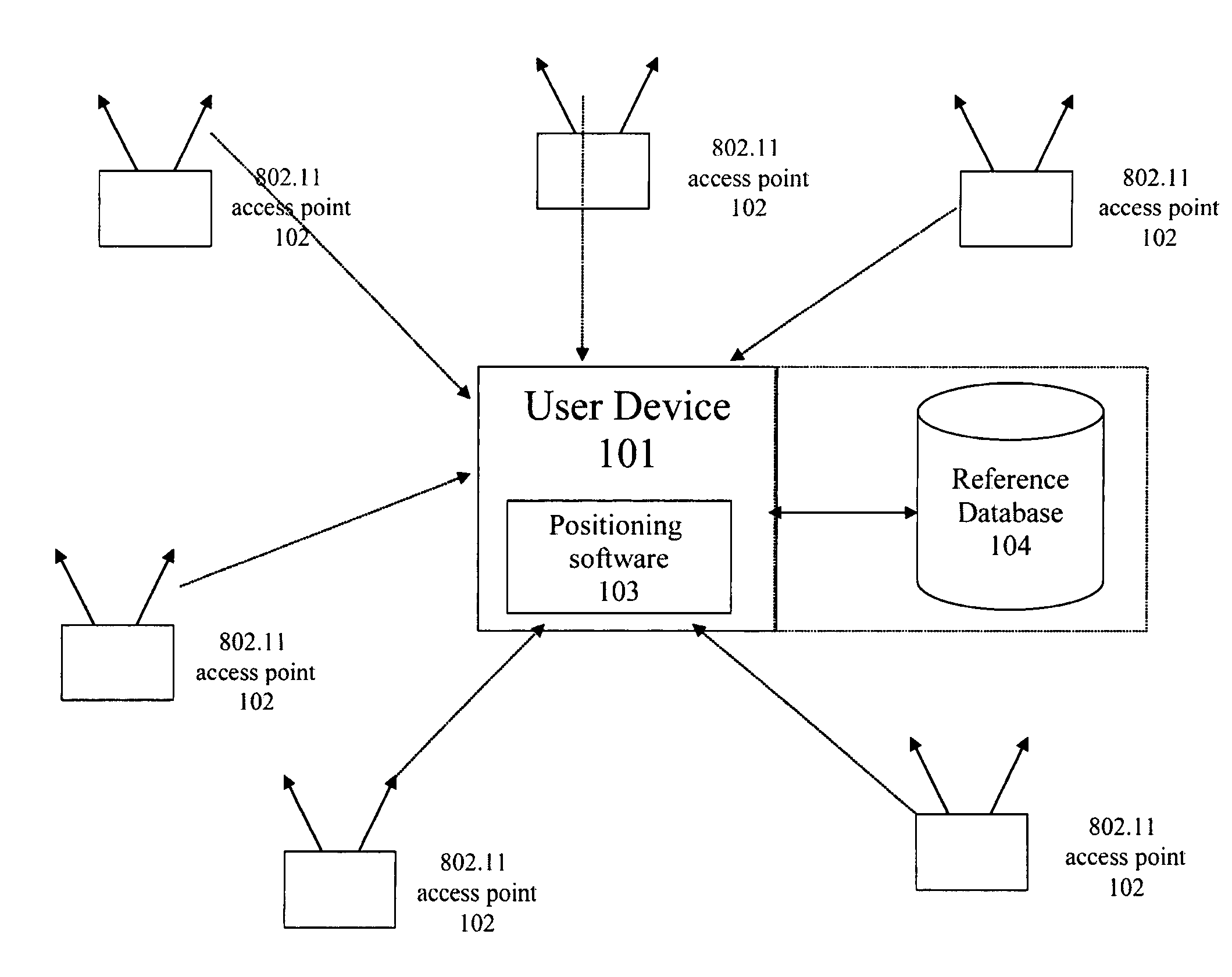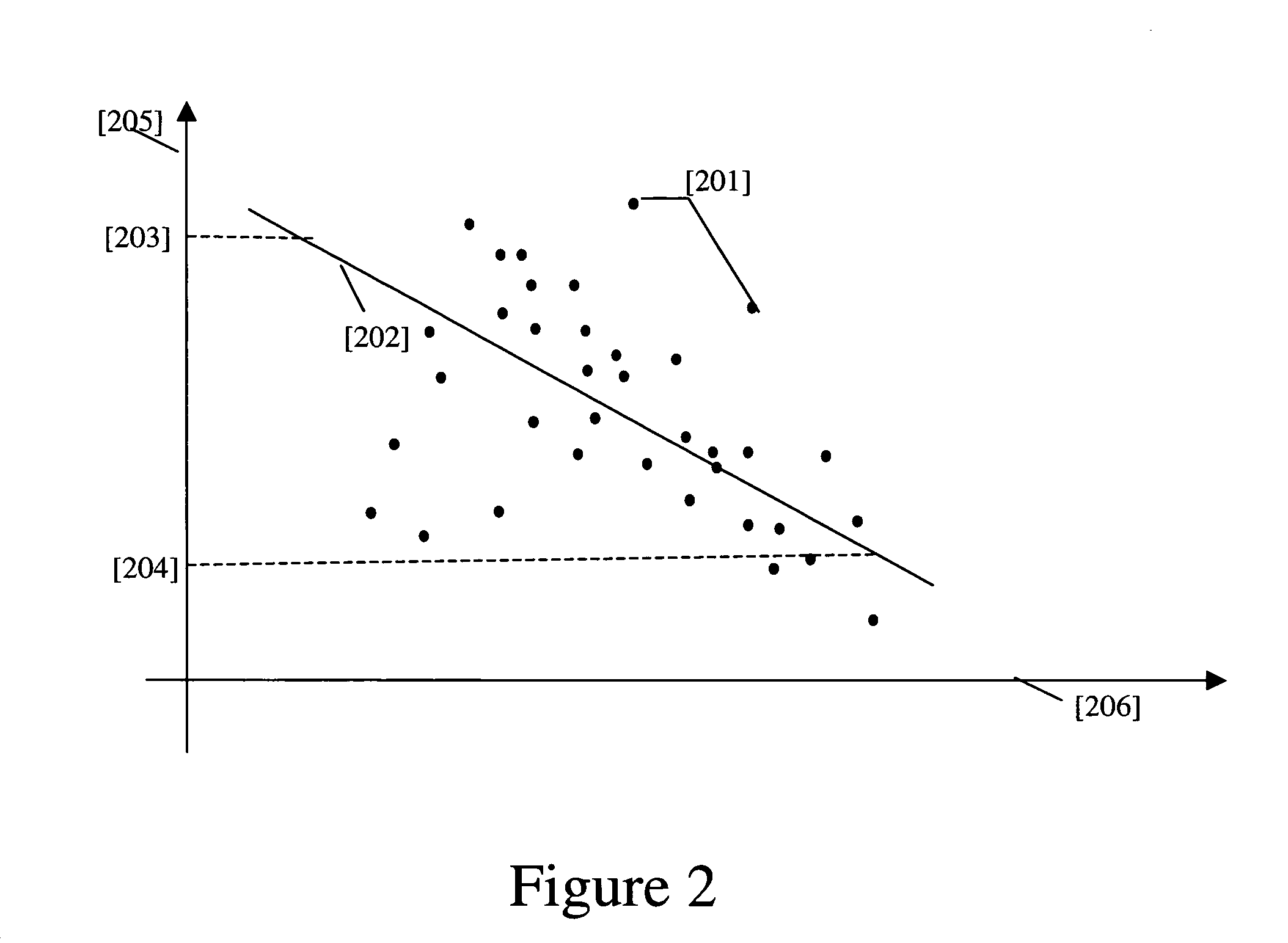Estimation of position using WLAN access point radio propagation characteristics in a WLAN positioning system
a positioning system and radio propagation characteristic technology, applied in the field of positioning systems, can solve the problems of inability to conduct the kind of detailed site survey required across an entire city, ineffective in any wide-area deployment, and high accuracy requirements for these use cases
- Summary
- Abstract
- Description
- Claims
- Application Information
AI Technical Summary
Problems solved by technology
Method used
Image
Examples
Embodiment Construction
[0032]Embodiments of the invention provide a methodology to classify WLAN access points based on their radio propagation characteristics in a WLAN based positioning system and to increase the accuracy of position, velocity and bearing estimations. Under certain embodiments, radio propagation characteristics of WLAN access points are estimated based on RSS samples in their coverage area. For example, radio propagation characteristics can be characterized by finding one or more signal power-distance gradients for at least one of the WLAN access points.
[0033]There are different physical phenomena that impact Received Signal Strength (RSS) variation in the dimensions of space and time. The RSS variation is categorized as either fast fading or slow fading. The techniques disclosed herein focus on estimating the slow fading characteristics of the RSS and also assess the estimation quality and quantify the estimation.
[0034]Embodiments of the present invention build on techniques, systems a...
PUM
 Login to View More
Login to View More Abstract
Description
Claims
Application Information
 Login to View More
Login to View More - R&D
- Intellectual Property
- Life Sciences
- Materials
- Tech Scout
- Unparalleled Data Quality
- Higher Quality Content
- 60% Fewer Hallucinations
Browse by: Latest US Patents, China's latest patents, Technical Efficacy Thesaurus, Application Domain, Technology Topic, Popular Technical Reports.
© 2025 PatSnap. All rights reserved.Legal|Privacy policy|Modern Slavery Act Transparency Statement|Sitemap|About US| Contact US: help@patsnap.com



